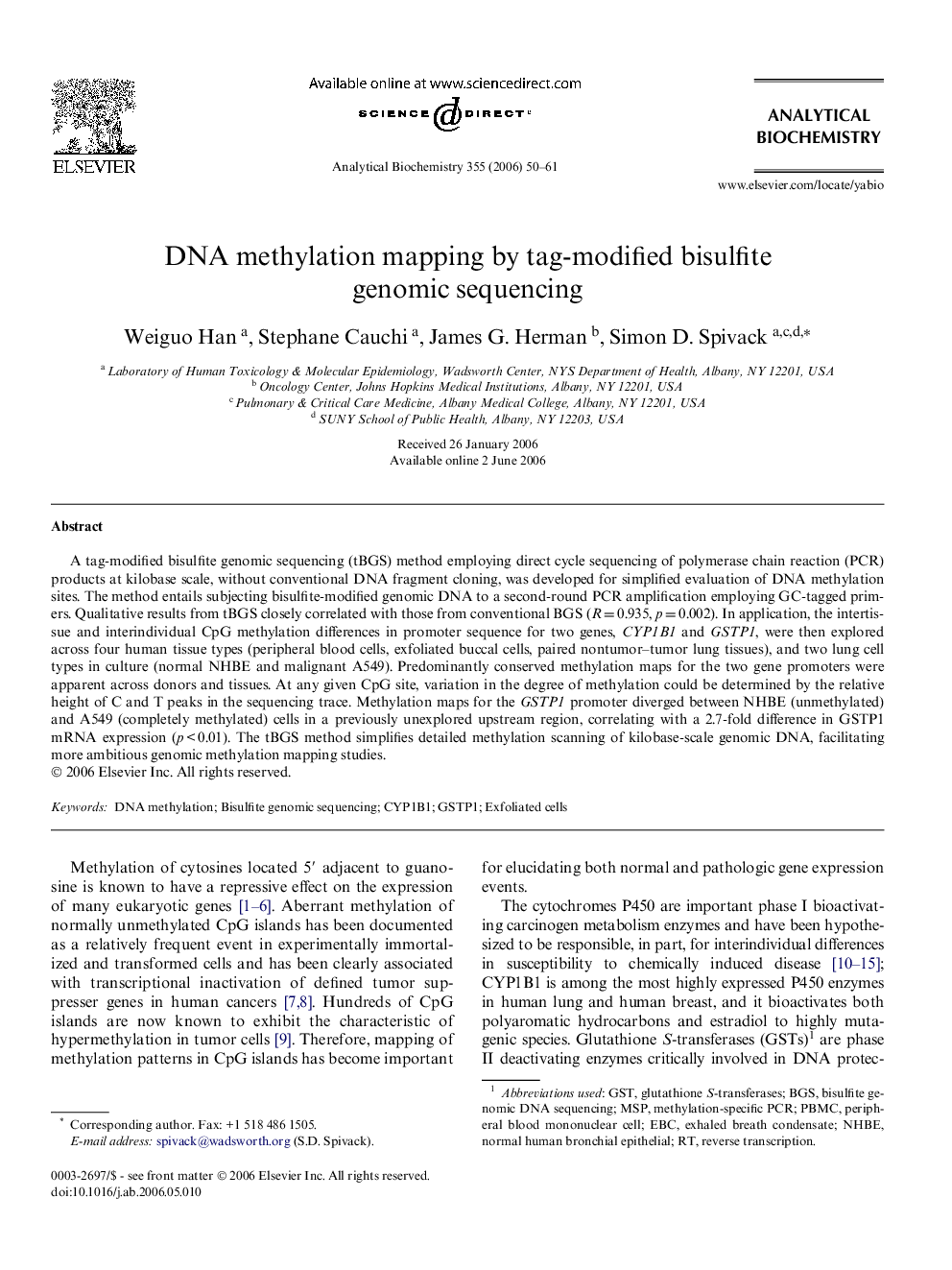| Article ID | Journal | Published Year | Pages | File Type |
|---|---|---|---|---|
| 1176595 | Analytical Biochemistry | 2006 | 12 Pages |
A tag-modified bisulfite genomic sequencing (tBGS) method employing direct cycle sequencing of polymerase chain reaction (PCR) products at kilobase scale, without conventional DNA fragment cloning, was developed for simplified evaluation of DNA methylation sites. The method entails subjecting bisulfite-modified genomic DNA to a second-round PCR amplification employing GC-tagged primers. Qualitative results from tBGS closely correlated with those from conventional BGS (R = 0.935, p = 0.002). In application, the intertissue and interindividual CpG methylation differences in promoter sequence for two genes, CYP1B1 and GSTP1, were then explored across four human tissue types (peripheral blood cells, exfoliated buccal cells, paired nontumor–tumor lung tissues), and two lung cell types in culture (normal NHBE and malignant A549). Predominantly conserved methylation maps for the two gene promoters were apparent across donors and tissues. At any given CpG site, variation in the degree of methylation could be determined by the relative height of C and T peaks in the sequencing trace. Methylation maps for the GSTP1 promoter diverged between NHBE (unmethylated) and A549 (completely methylated) cells in a previously unexplored upstream region, correlating with a 2.7-fold difference in GSTP1 mRNA expression (p < 0.01). The tBGS method simplifies detailed methylation scanning of kilobase-scale genomic DNA, facilitating more ambitious genomic methylation mapping studies.
